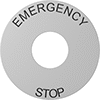Filter by
Switch Action
Switching Voltage
Panel Cutout Diameter
Push-Button Style
Illumination
Actuator Color
Switch Designation
Environment
Switching Current
Switch Starting Position
Mounting Location
Wire Connection
Enclosure Rating
Actuator Base Material
Position Designation
Bulb Voltage
Export Control Classification Number (ECCN)
DFARS Specialty Metals
Choosing an Electrical Switch
More
























































































































